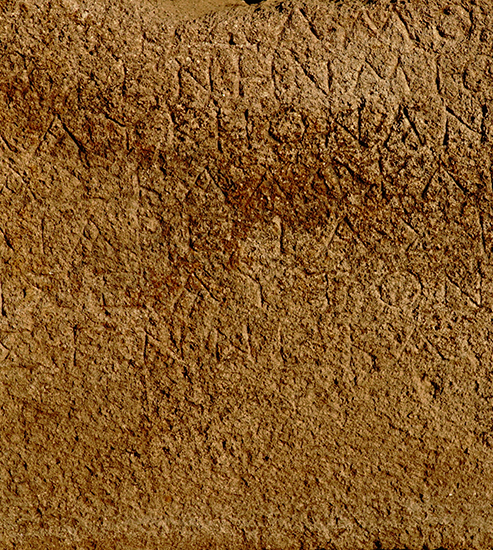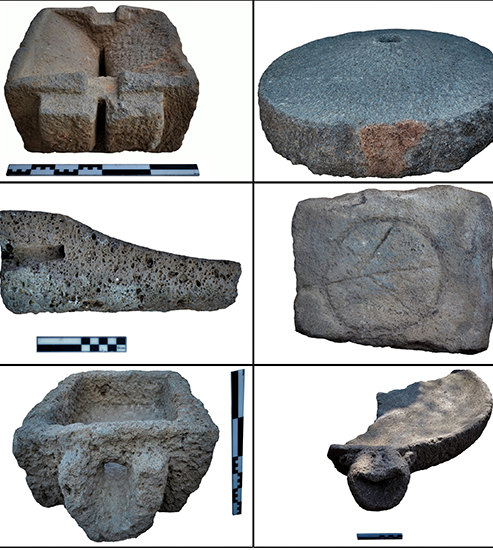
HISTORY OF RESEARCH IN AIGAI
Ciriacus of Ancona was probably the first traveler who visited or passed near Nemrut Kale (Aigai). This visitation must have been before 1447, between 1444 and 1446. Approximately 400 years later, Colonel William Martin Leake briefly mentions during his pass in the region that there is not sufficient data on the locations of Aeolian cities, including Aigai, which Strabon mentions. Shortly before 1828, an English pastor and researcher who has lived in İzmir, Arundell mentions Aigai which is one of the Aeolian cities that mentioned by Herodotus, because of a trip held around Menemen, only because its approximately to Temnos.

HISTORY OF AIGAI
Aigai, located in the province of Manisa, was established on the Gün Mountain in the Yunt Mountain Range, which was named Aspordene in ancient times. Today, Yunt Mountain is administratively located within the provincial borders of Manisa and İzmir. Its total area is 3,521,70 km wide, and it is bordered by the Bakırçay (ancient Kaikos) in the north, the Gediz (ancient Hermos) river in the south, Kırkağaç and Akhisar plains in the east and the Çandarlı Bay in the west. Highest peak of Yunt mountains, which consists of 500 m-1000 m hills and plains between them, stands at 1076 m. In ancient times, the mountain was the border between Mysia and Aiolis. The most important ancient settlement on the Yunt Mountain was Aigai.

MEANING OF AIGAI AND ECONOMY OF THE CITY
Herodotus refers to the city as Aigaiai, Polybius as Aigaieon, Tacitus Aegaeates, Plinius as Aegaeae, and in the coins minted by the city, Aigeaion, Aigaion and Aigeon were used. Herodotus (I.149) refers to the city as Aigaiai, Polybius (His. XXXIII.13) as Aigaieon, Tacitus (Tac.Ann. II.47) Aegaeates, Plinius (Nat.His., V.32) as Aegaeae, and in the coins minted by the city, Aigeaion, Aigaion and Aigeon were used. Other writers who mentioned the city, Strabon (XIII.3.5), Pseudo Skylaks (98) and Plinius (Nat. His., V.121) locate the city on the mountainous inner region.

AIGAI IN THE ARCHAIC AND THE CLASSICAL PERIODS
During the Archaic Period Aigai had a triangularshaped acropolis enclosed by fortification walls. The Archaic fortification wall that surrounded the acropolis was about 1150 m long and 1-2 m wide Today 830 m of this wall can be followed. The entrance to the 5.9 ha. Archaic city was provided by the Gate of Demirkapı and the Gate of the Agora Street on the northern wall. Both gates were designed as overlapping gates.

AIGAI IN THE HELLENISTIC AND THE ROMAN PERIODS
During the Hellenistic Period an intensive building program resulted in an enormous expansion of the settled area. On the other hand, political instability and conflicts during the Period of the Diadochoi resulted in a rather insecure setting. As a result of these security concerns during the Hellenistic Period, a new defensive line on the northern slope and two separate defensive lines on the southern slope of the city were built. City’s total area enclosed by defense lines was reached to 23,2 hectares in the Hellenistic period.
